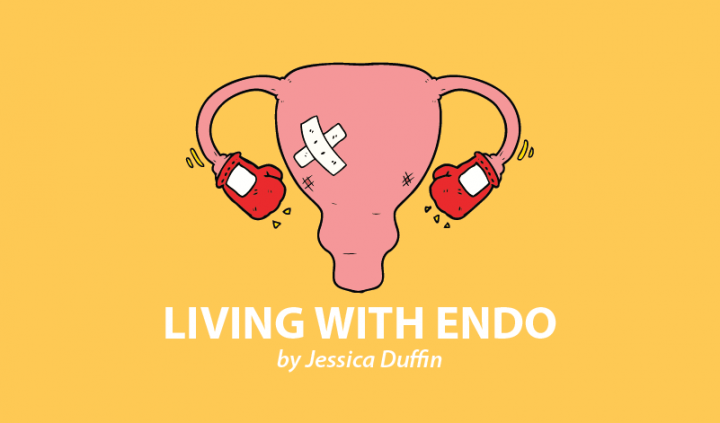I just finished writing my first e-book, which comes in at 31,719 words on 154 pages. Well, when I say “finished,” I mean that it’s 97 percent complete. I’m sending the draft to some of my trusted mentors and endometriosis experts to gather feedback.
The book, “This EndoLife, It Starts with Breakfast,” is a nutrition guide and cookbook for living and thriving with endometriosis. It’s divided into two parts: The first has research and data-packed information; the second comprises 28 hormone-supporting, blood-sugar-balancing, and inflammation-reducing breakfast recipes.
The project took much more effort than I had expected. But the process showed me what my body is capable of and revealed more about my endo management.
So, as a little nod to my celebration of getting the book most of the way to the finish line, I thought I’d reflect on my experience and share what I’ve learned with you.
After the initial research and planning stages, I began recipe testing and then moved on to photographing the dishes. This entire process took three to four months, during which I, of course, had periods.
I’ve managed my endometriosis through cycle syncing for about a year or so, sometimes successfully, and other times not. But when I adhered to the practice, many symptoms such as brain fog, fatigue, and premenstrual syndrome, disappeared. However, while recipe testing and shooting, I stopped cycle syncing and adapting my diet to each phase of my cycle. Instead, I was eating on the go and dealing with unstable blood sugar levels due to trying out many dishes during the day.
The result? In the beginning, before I went completely off track, my follicular and ovulatory phases were still incredible. Every recipe seemed to work smoothly, my pictures came out beautifully, and I had energy to keep pushing through into the evening. But when I moved into my luteal and menstrual phases, I began to notice the fatigue, brain fog, low energy, and self-doubt creeping in. Suddenly I was unsure of my recipes, my creative flair was gone, and my pictures weren’t coming out how I wanted. I was dragging myself through each day.
In hindsight, I should have focused on the energetic and creative parts of the process in my follicular and ovulatory phases, and spent my luteal and menstrual phases on the more analytical tasks of editing, writing, and working on my marketing plan.
As the months went on, I allowed my hormonal health to destabilize further, and I became less energetic and unfocused during my follicular and ovulatory phases. The difference was noticeable and trackable.
When I was shooting and testing, I was up at 6 a.m. and working late into the night, sometimes past midnight. I was super-stressed all of the time. I was so focused on my work that I didn’t go outside for days and had minimal contact with other people. However, I retained two key forms of daily self-care: meditating for five minutes and exercising for 30. These basic routines helped me to energize and focus on the day ahead, and I felt stronger and more capable after practicing them.
Yet the late nights and early starts, poor and irregular eating habits, and stress took their toll. I began experiencing blood sugar crashes, depression, anxiety, PMS, tearfulness, fatigue, brain fog, and period pain. The period pain didn’t reach very high levels on the pain scale, but as I hadn’t experienced pain in a long time, the increase was concerning.
I’ve reintroduced the following essential practices into my routine: I’m in bed by 9 p.m. and awake at 6:30 a.m. I’m getting sunlight, exercising, and eating regular meals again. It’s incredible how my body has begun to bounce back, how energized I feel, and how stable my energy levels are throughout the day. I’m also fascinated that this month I had a painless period.
The Last 90 Days challenge has been a genuine catalyst for my recovery, and it seems to be perfectly timed. But regardless of how off course I got with my health while writing the book, the experience demonstrated the power of proper nutrition and lifestyle practices when it comes to feeling well with endometriosis — at least, for me. And despite my struggles, the book is complete. Well, almost.
Given the right tools, I am capable of much more than my experience with endo would have me believe.
***
Note: Endometriosis News is strictly a news and information website about the disease. It does not provide medical advice, diagnosis, or treatment. This content is not intended to be a substitute for professional medical advice, diagnosis, or treatment. Always seek the advice of your physician or other qualified health provider with any questions you may have regarding a medical condition. Never disregard professional medical advice or delay in seeking it because of something you have read on this website. The opinions expressed in this column are not those of Endometriosis News or its parent company, BioNews Services, and are intended to spark discussion about issues pertaining to endometriosis.

